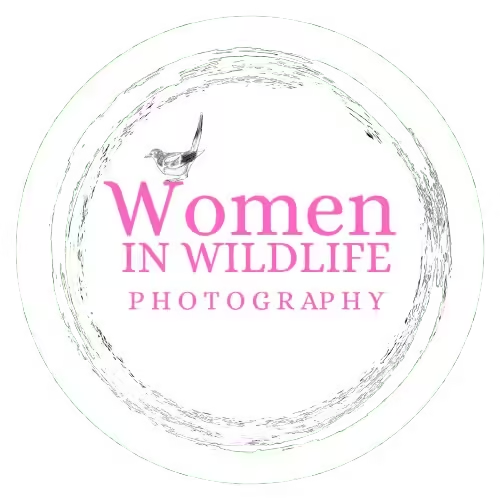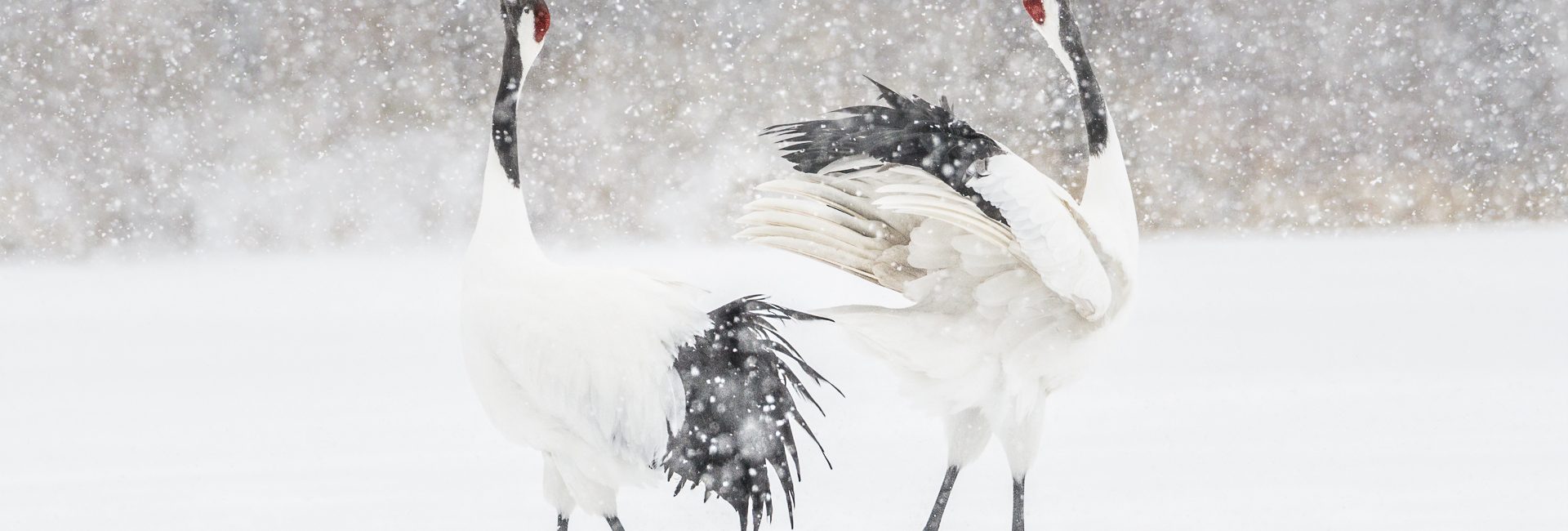

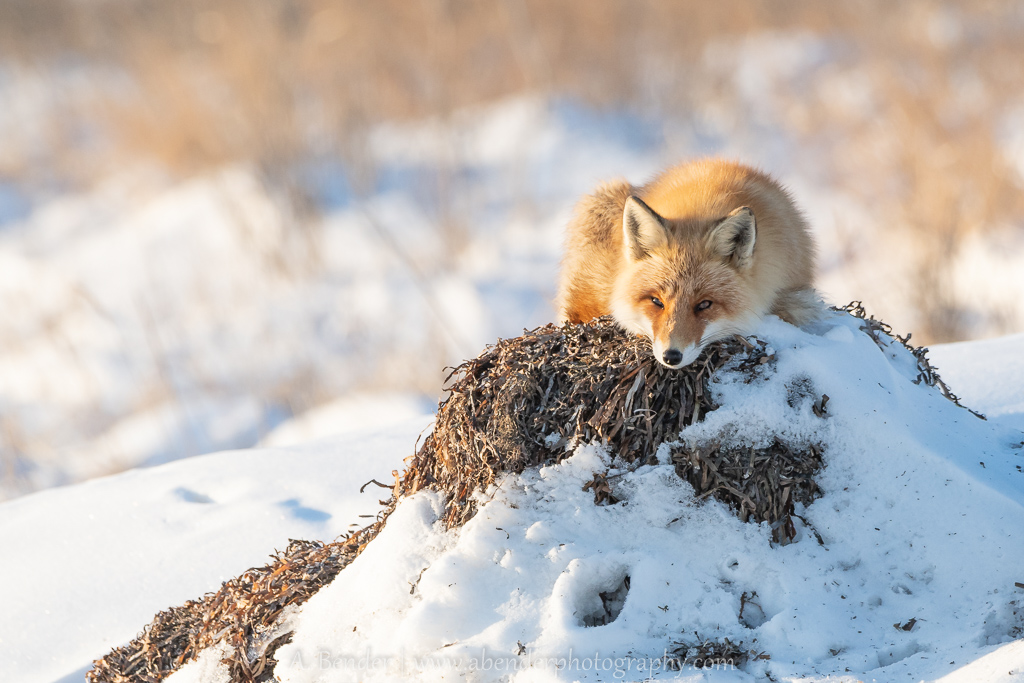
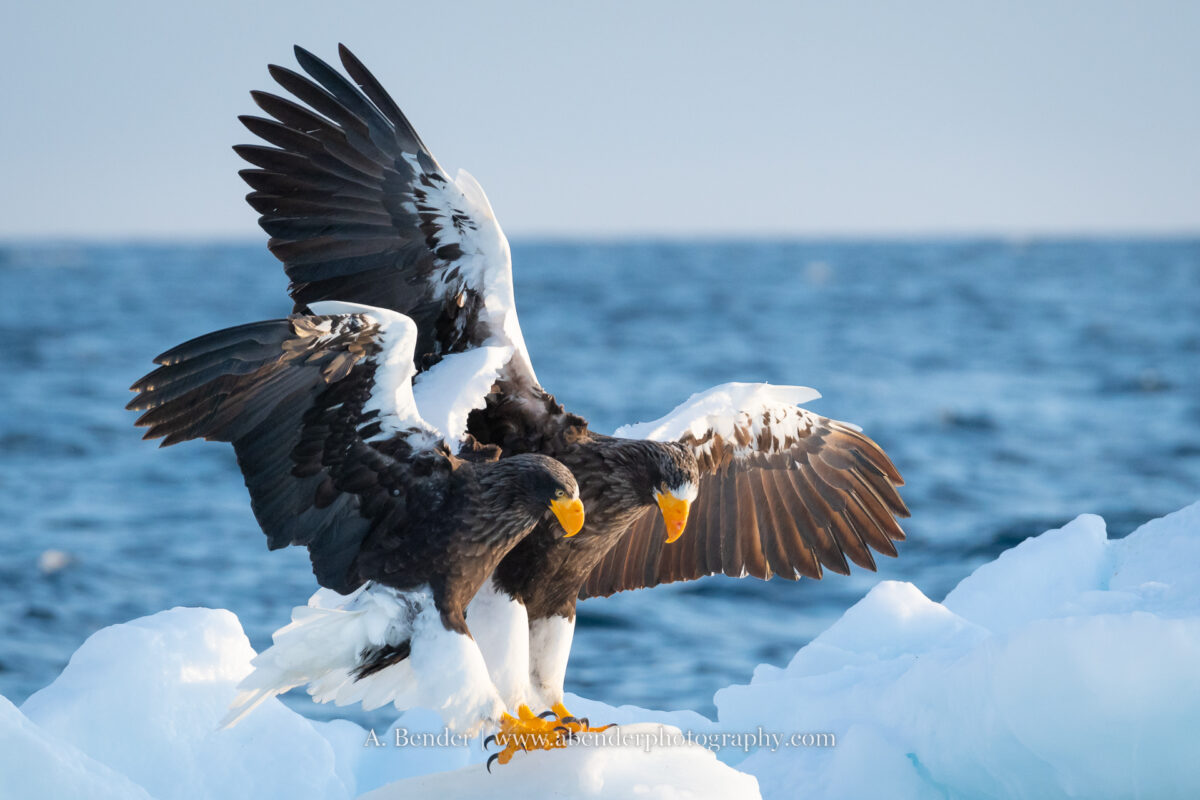
Hokkaido is a magical place filled with stunning wildlife. The most northern island in Japan, Hokkaido holds some of the largest areas of wild lands left in Japan. The sparsely populated Eastern region hosts a wide variety of wildlife. Some, like the Steller’s Sea Eagle migrate to the area to overwinter while others, such as the Red Crowned Crane are year long residents. Set against a landscape draped in snow, these creatures allow us to observe them as they go about their daily rituals in this frozen wonderland. Some behaviors we will see include the Red Crowned Crane mating display, Steller’s Sea Eagles fishing, and Red Foxes patrolling for their next meal.
Species Commonly Found In Hokkaido
Red Crowned Crane
Wild Whooper Swan
Stellar’s Sea Eagle
White-tailed Eagle
Ezo Red Fox
Yezo Sika Deer
Some Considerations Before Traveling To Japan
Coming to Japan for the first time can be an eye opening experience. The culture is very different from what many are use to. However, there are some aspects of it that need to be taken into consideration before booking this tour.
- Limited western food options. Japan is a culinary delight for those without many dietary restrictions. Those who like fish, rice, vegetables, and noodles will be right at home here. Vegetarians will find options very limited, if not non-existent, in some areas we visit. Many of our meals will be found in the local konbini, a Japanese experience in and of itself. Evening meals will be sit down affairs either hosted by our accommodations or at local restaurants to include tempura, sushi, or other local dishes.
- Sleeping Arrangements. We will be staying at a mix of Japanese business/Western hotels and smaller traditional ryokans. The traditional rooms typically feature tatami mats with futon mattresses on the floor. Those with mobility issues may find these accommodations difficult.
- Winter environment. Early mornings and sunset shoots will be the usual on this tour. This also means that temperatures of -4°F/-20°C are not uncommon. Highs are typically no more than 40°F/5°C and we will be out for extended periods of time. Protective clothing is a MUST! This includes thermal base layers, puffy coats with waterproof shell, snow pants, and thick winter gloves and hats. Specific suggestions are available upon request and will be included in the registration literature.
About Your Leader…..

Alyce Bender is a nature photographer, writer, educator, and adventurer. Camera in hand since childhood, her fascination for photography developed into a career after serving in the U.S. Air Force. Her passion for wildlife and the natural environment compels her to connect others with nature through sharing both visual art and in-field experiences that promote conservation, creativity, and ethical photography.
She is a Tamron USA Ambassador, contributing writer and photographer for the Journal of Wildlife Photography, and partner photographer with Girls Who Click. Her work has been featured in group and solo gallery shows across the U.S. as well as in international publications from the U.K. to Japan. Bender leads photography tours and workshops in partnership with Wildside Nature Tours, Women in Wildlife Photography, and others to location around the world to help photographers explore and expand their personal vision and naturalist skills ethically. When not in the field, she offers a variety of educational programs both in person and virtually for photography organizations large and small.
You can see more of Bender’s work and upcoming tours at www.abenderphotography.com.
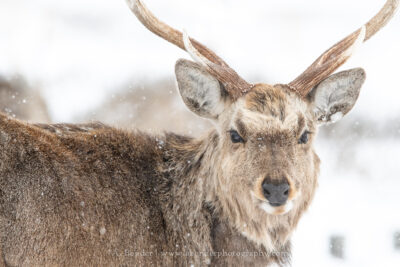
4 Participants
$5,850 based on double occupancy
$800 single supplement
Feb. 1st – 10th, 2025
Day 1 (Feb. 1st) Arrive in Hokkaido – Kushiro Airport (KUH)
Upon arriving we meet at the airport before heading out to catch our first sightings of the endangered, red-crowned cranes as we visit the Akan International Crane Center. After the visit we will head into Kushiro to get checked in and settle down for the evening. This evening we will have a group dinner to discuss additional details of what to expect, photography tips, common Japanese customs, and expectations for the tour.
1 night at Kushiro Century Castle Hotel
Day 2 (Feb. 2nd) Nemuro
We check out of our hotel early and spend the morning photographing the red crowned cranes in the area before heading to the port city of Nemuro. On the way we stop to look for more wildlife along the coast in several places with potential subjects including fox, deer, short eared owls, whooper swans, and more eagles.
East Harbor Hotel
Day 3 (Feb. 3rd) Nemuro
This morning we will gather and head out to the frozen lakes to watch eagles (and maybe fox) come to scavenge the leavings of ice fishermen. Beyond that we will continue to search for fox, swans, owls, and deer.
East Harbor Hotel
Day 4 (Feb. 4th) Rausu
After a morning session, we will collect our belongings and make the trek towards the northeastern coastline to the small fishing village of Rausu. Located on the UNESCO Natural Heritage site and on the boarder of the Shiretoko National Park, Rausu is a hub of natural wonders.
Livemax Resort Shiretoko Sea Front
Day 5 (Feb. 5th) Rausu
Depending on the weather conditions, we will either be up very early or just early to catch our boat out onto the Nemuro Strait where we will be able to photograph the IUCN Vulnerable Steller’s sea eagles and White-tailed sea eagles. While out, we may get to see them on drift ice if the annual floe is close enough to reach. We will be on the water for several hours before returning to the hotel to defrost and recharge. Early afternoon we will head out to explore further afield looking for the endemic species of fox – the Ezo red fox. Sika deer, short eared owls, and more eagles can potentially be seen as well.
Livemax Resort Shiretoko Sea Front
Day 6 (Feb. 6th) Lake Kussharo
We will have another morning on the boat to continue photographing sea eagles from the water. Upon returning, we will depart Rausu and head deeper into the interior of the island. Here we head up into the volcanic mountains to Lake Kussharo. This is the largest caldera lake in Japan and there is geothermal activity still to this day as evidenced by warm sandy spots and the hot spring outflows along the shore. Here several hundred whooper swans gather during the winter, and we will take this time to photograph them in the evening this day.
Kinkiyu
Day 7 (Feb. 7th) Lake Kussharo
In the morning and evening we will photograph the Whooper Swans along the lake while keeping an eye out for long-tailed tits and wood nuthatches. There is the occasional Ezo red fox found in the area as well. This area is great not just for wildlife but some landscapes as well, depending on the weather.
Kinkiyu
Day 8 (Feb. 8th) Kushiro
This morning we will once again pack out of our hotel before having a morning photography session with the Whooper Swans. From there we will head back to Kushiro, having made a complete circuit of this rural and beautiful region of Hokkaido. We will have the option to either stay and explore in Kushiro or we can have a photography session with the cranes.
Dormy Inn
Day 9 (Feb. 9th) Kushiro
Up early we make the drive out into the rural countryside to photograph the red crowned cranes from several locations throughout the morning. Taking a break for lunch, we continue to focus on the cranes in the afternoon and evening.
Dormy Inn
Day 10 (Feb. 10th) Depart Kushiro
We board domestic flights back to Tokyo/Haneda International.
- All accommodations day 1-10
- All ground transportation
- Professional guiding service
- Boat fees and park entrance fees
- All meals day 1-10 (you will be eating together as a group)
- Air Travel
- Travel Insurance
- Gratuities
Easy – no long walks but you will be exposed to freezing temperatures.
